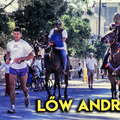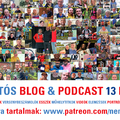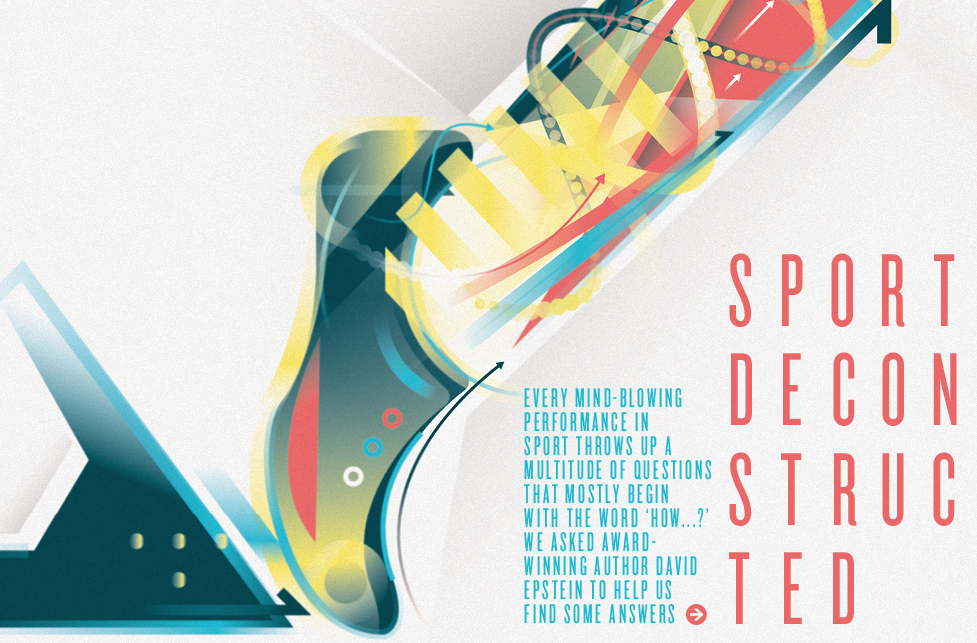 Egy baromi érdekes interjú (2014.01.08.) került a kezembe múltkor Birminghamben járva: az angol Sport Magazine egy hosszú interjút közölt az elismert sportkutatóval, David Epsteinnel (ajánlott irodalom tőle: The sports gene). The DNA of sport - why some athletes are born to win? - tette fel a kérdést a szerző, Sarah Shepard. Tényleg, miért vannak született győztesek? Nekem pár kérdést megválaszolt a szuperemberekről, párat nyitottan hagyott. Volt olyan, amit megértetett és árnyalt: például a fekete sportolók rejtélyéről - azaz, miért remekek futásban, miért nem sikeresek úszásban? Szól az Usain Bolt-jelenségről (földrajzi adottságok, kulturális elvárások és beágyazottsági sajátosságok miatt kerülnek ki egyes helyekről valamiben szignifikánsan kiváló sportolók). Ez utóbbival amúgy összevetni javaslom Malcolm Gladwell Kivételesek c. könyvét. Szó van még a cikkben a női és férfi teljesítmények ollójának nyílásáról és záródásáról (pl. ironman 10km és ultra), valamint a gyerekkori kiválasztódásról (lassú gyerekek sosem lesznek később gyors felnőttek). Angolul beszélők fordítsák le magyarajkú sporttársainknak a cikket és a hozzátartozó szakzsargongyűjteményt, és nézzék meg a cikkbe ékelt NYTimes-infografikát a 100 méteres futás fejlődéséről. Megéri. Aki meg lusta olvasni, az nézze meg a TED-videót.
Egy baromi érdekes interjú (2014.01.08.) került a kezembe múltkor Birminghamben járva: az angol Sport Magazine egy hosszú interjút közölt az elismert sportkutatóval, David Epsteinnel (ajánlott irodalom tőle: The sports gene). The DNA of sport - why some athletes are born to win? - tette fel a kérdést a szerző, Sarah Shepard. Tényleg, miért vannak született győztesek? Nekem pár kérdést megválaszolt a szuperemberekről, párat nyitottan hagyott. Volt olyan, amit megértetett és árnyalt: például a fekete sportolók rejtélyéről - azaz, miért remekek futásban, miért nem sikeresek úszásban? Szól az Usain Bolt-jelenségről (földrajzi adottságok, kulturális elvárások és beágyazottsági sajátosságok miatt kerülnek ki egyes helyekről valamiben szignifikánsan kiváló sportolók). Ez utóbbival amúgy összevetni javaslom Malcolm Gladwell Kivételesek c. könyvét. Szó van még a cikkben a női és férfi teljesítmények ollójának nyílásáról és záródásáról (pl. ironman 10km és ultra), valamint a gyerekkori kiválasztódásról (lassú gyerekek sosem lesznek később gyors felnőttek). Angolul beszélők fordítsák le magyarajkú sporttársainknak a cikket és a hozzátartozó szakzsargongyűjteményt, és nézzék meg a cikkbe ékelt NYTimes-infografikát a 100 méteres futás fejlődéséről. Megéri. Aki meg lusta olvasni, az nézze meg a TED-videót.
SPORT DECONSTRUCTED
Every mind-blowing performance in sport throws a multitude of questions that mostly begin with the word „HOW...?” Before the new sporting year adds too many more questions to the equation, we asked award-winning author David Epstein to help us find some answers. Sport is not complicated: run faster, score more goals or jump higher than your opponent, and you will win. But sport’s mask of simplicity hides an intricate web of factors including talent, genetics and environment. Together, they have a critical impact on who triumphs and who is left scratching their head over what they can do to make sure the result is different next time around.
That complex mishmash of factors is one of the reasons why sport continues to astound and mesmerise, despite audiences becoming tougher to impress with every passing year. It’s also why we often struggle to comprehend how fellow human beings – most of whom are working with the same basic structure as the rest of us – achieve things that seem to confound all logic. Running 100m in just 9.58 seconds? Ridiculous. A 250lb man leaping 41 inches off the ground? Extraordinary. Scoring 228 goals in 220 appearances for a top European football club? Unbelievable.
While most of us are content to sit back and admire such feats, shaking our heads in mild disbelief, David Epstein – a former senior writer for Sports Illustrated, collegiate runner and author of acclaimed book The Sports Gene – has devoted his working life to diving head first into that very mishmash. So, at the start of a sporting year that is guaranteed to bring us yet more improbable and seemingly impossible performances, we asked Epstein to answer some of the questions that have been gnawing at our overworked sport brains for some time now.

Sarah Shepard: Usain Bolt is often labelled a freak of nature. Do such things actually exist, or is there solid reasoning behind every mind-blowing performance?
David Esptein: Nobody on earth has all the right genes that would make them a good athlete. Bolt might have more than others, but he is not the perfect athlete. The reason why we don’t see many – if any – other guys with his stature and speed in sprinting is largely because if he’s born in any other country than Jamaica, the Bahamas or Trinidad, he gets snapped up by another sport.
At 15 years old, Bolt was 6ft 4ins with blinding speed – in America, he becomes an NFL or basketball player. But in Jamaica, a key to world domination is keeping the best sprinters on the track. So the reason that Bolt appears to be this ‘freak’ athlete actually comes down to a combination of two things: a fairly unique physiology, and the fact that he was born in one of the only places in the world where he would actually be identified. If there were other places like Jamaica, we would identify more Usain Bolts and we would view them as less freakish. So, while I do think he’s rare, I don’t think he’s a freak in the sense that there’s no one else out there like him.”
Have you come across any other individuals who fit the term ‘freak of nature’ better than Bolt
The closest thing that most people would identify as a freak would be the Finnish cross-country skier Eero Mäntyranta [who died in 2013 December], whose EPO receptor mutation [see it below in Jargon Buster panel] meant he had an unusually high red blood cell count – measured at up to 65 per cent higher than that of the average man.

Or the ‘superbaby’ who was born with a myostatin mutation [see Jargon Buster again], meaning he came out of the womb with bulging biceps and chiselled calves. Those are things I think people would call freakish, but there are actually other people out there with those. We don’t identify them very well. But we do know, for example, that in cross-country skiing there are other guys who have a high red blood cell count for reasons that no one can explain. So these individuals are not ‘freakish’ in the sense that they are unique. And that includes Usain Bolt.”
In endurance sports like Ironman, the fastest women appear to be closing the gap on the fastest men. Is it possible there will come a time when the sexes are evenly matched?
No. In fact the gap is actually widening, not getting closer. It was closing in the 1980s – partly because it was the era of mega-doping – but if you look at the times in the most recent Ironman World Championships, the fastest man (Frederik Van Lierde, 8:12.29) was 12 per cent faster than the woman who won (Mirinda Carfrae, 8:52.14).
And in most events – from the 100m to the marathon – if you average the top 10 male and female performers, there’s an 11 per cent difference between the sexes. And that difference is stable, it’s not closing. The smallest gap is actually in distance swimming, where, if you were to extend a race longer and longer, I think women could close the gap. That’s because it’s a sport where there are fewer drawbacks to the female physiology of having a slightly higher body-fat percentage and shorter limbs than men.
There is an exception to the above, though. If you take a man and a woman who cross the finish line of the London Marathon at the exact same time – not the elite-level runners, but decent runners – and get them to race over 10km, then the man will win. But if they race over 40 miles (64km) then the woman will usually win. Part of the reason is that the woman will usually be smaller, which is k more economical for long-distance running. But if you do the same for the best 10 men and best 10 women in the world, then even at ultra-marathon distance the 11 per cent difference remains. That’s because the elite men who win ultramarathons tend to be smaller, so difference in body size between men and women at that level is not the issue that it is for average runners.“
Records in Ironman events seem to get broken in every race. BUT at other distances, records are hanging around much longer before they are broken. Why the difference?
Ironman is a young sport, so the competitive population is really small. Whereas if you look at the 1,500m and the mile, those records were broken on average about eight times per decade for around 50 years – but now they haven’t been broken since the 1990s. We are seeing a levelling in some events, but in long- distance events we’re just at the beginning because more and more people are starting to compete at those distances with every passing year.”
Are we as fast as we’re ever going to get over distances such as the 100m, then?
We’re definitely seeing diminishing returns. One reason is that Bolt sort of moved us into the future, in a strange way. But another thing that has to be accounted for is the track surfaces, which are making a tremendous difference. When Jesse Owens won Olympic gold in the 100m, he ran on cinders – he had to dig holes in the dirt to start from. There was a biomechanical joint analysis done that showed Owens’ joints were moving as fast in the 1930s as those of Carl Lewis in the 1980s, so if it wasn’t for Owens running on a surface that stole far more energy than the synthetic surfaces on which Lewis set his records, their 100m times would be much closer.
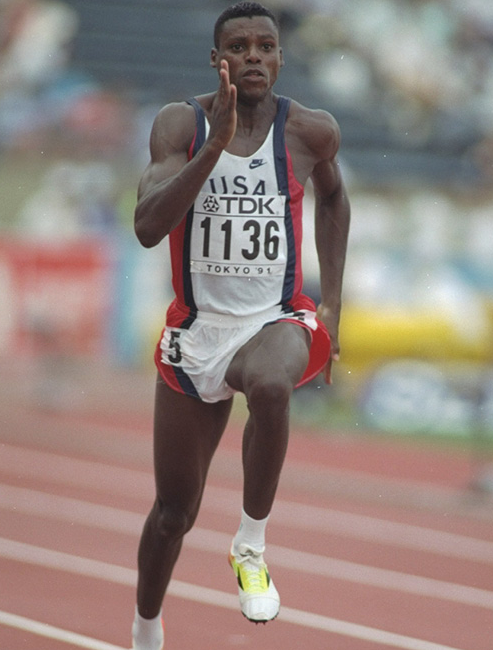
Here is an excellent info-graphic about it: http://www.nytimes.com/interactive/2012/08/05/sports/olympics/the-100-meter-dash-one-race-every-medalist-ever.html?hp&_r=1&.
Although we are seeing diminishing returns, I still think track surfaces will continue to help us get a little bit faster yet, and I do think there are other Usain Bolts out there who are capable. If we can find those people and get them in a race in which they have a favourable tail wind that’s not illegal, and that is being run on a faster track, then I think we can take the record down a little bit more. But it’s going to be slow going.”
Given the right training and dedication, can anybody become elite-level fast?
Anyone can become faster by becoming more powerful, and you can learn to sustain your top speed better. But there is one quote that sticks with me from a guy called Justin Durandt, who is the high performance manager at the Sports Science Institute of South Africa. One part of his job involved travelling the country testing people for running speed and then recruiting them into rugby programmes. He’s tested more than 10,000 boys, and he said he’s never seen a boy who was slow become fast. Never.
Slow kids never become fast adults, and that has been shown in repeated studies. You have to be born with a healthy proportion of fast-twitch muscle fibres [see Jargon Buster, following page] to be fast, and it’s a zero sum game. There’s a reason why we don’t see the same person winning the 100m and the marathon, because you either have a higher proportion of fast-twitch or slow-twitch fibres, and they crowd the others out.
So, muscle fibre type plays a big role, but it also has to do with the tightness and the length of your tendons and other physiological measures. For example, the distance between your k ankle bone and your Achilles tendon – that determines how much force you can put into your Achilles tendon when you flex your foot [which in turn determines how much power you can put into your sprint].”
Kenya produces a large proportion of the best distance runners in the world. Why?
If you look at the major marathons in 2013, in Berlin the top five finishers in the men’s race were Kenyan, and three of the first five women were. In Chicago, the first four men were Kenyan, as well as the first two women. In New York, both winners were Kenyan. But every single one of those athletes is from the Kalenjin tribe [see Jargon Buster]. That’s a source population the size of Costa Rica. Can you imagine how crazy it would be if Costa Ricans took the first five places in a major marathon.
There are 14 British male marathoners who have run faster than 2.10 in history; 17 Americans who’ve done it – three of whom are African immigrants – and there are 72 Kalenjin who did it last season alone. This is specifically a Kalenjin phenomenon, and I think there are two major reasons. The first is down to hailing from a place at an extremely low altitude that has a very hot and dry climate – because of this, they have the evolutionary adaptation of long limbs proportional to their body size.
It’s an adaptation for cooling, because if you increase the surface area compared to the volume, it allows more heat to escape. Second, this is a people who on average have limbs that are extremely thin at the extremities. Your leg is like a pendulum – the greater the weight at the end, the more energy is required to swing it. If you look down and you have thick ankles, you’re just not going to win the New York Marathon, because your running economy won’t be good enough.
So, you have a population that on average has those traits, then you put them in a situation in which there’s no opportunity cost. They’re not putting off grad school like American runners are in order to train, for example – [they will embrace running because] there’s nothing else for them to do. They don’t have any mental inhibitions either. If you said to me now: ‘You should go and try to be a professional marathon runner,’ and I hadn’t run before, I’d say it’s way too late. But there are people who start there at 30 – there’s this ‘no limits’ mentality about when you can start.
Dennis Kimetto, who won the Chicago Marathon last year, was a farmer two years ago and he almost broke the world record. Kenyan long-distance runner Geoffrey Mutai saw him in a mall and said: ‘You look like you could run – why don’t you show up on the track?’ Take people with, on average, the right physiology, remove any mental barriers about why they shouldn’t be able to do it and throw in huge economic incentives, and you get what we’re seeing – the greatest over-representation of sporting skill in the history of the world in any sport.”

There are few white sprinters who can compete with the best in the world, yet when it comes to swimming the situation is almost reversed. Why?
The obvious one – at least in the US – is that there are far fewer pools in black communities, and it’s important to acknowledge that. If there were more pools and swimming lessons in African-American communities, there would be more athletes like Cullen Jones [who, in 2008, became the third African-American ever to make a US Olympic swimming squad]. But if you look only at average body types, I don’t think there would ever be as many African-American or African-British athletes in swimming as there would be in sprinting.
The ideal body shape for swimming is a long torso and short legs – like the long hull of a canoe that is good for speed on the water. More often, that is a body type indicative of northern European ancestry, because it’s better for retaining heat – it’s why the Inuit people have a really stocky build with short limbs. It’s great if you’re going to the North Pole, but it’s really bad for sprinting because you have short legs. I absolutely think there are more people like Christophe Lemaitre [the French sprinter who, in 2010, became the first white man to break the 10-second barrier for the 100m, running 9.92 seconds] out there, but on average you’re always going to see more swimmers of northern-latitude ancestry, and more sprinters of low-latitude ancestry – which basically means Africa.”
Is there any sportsperson whose genes you’re itching to examine under the microscope?
I would love to see a muscle biopsy for Bolt, and also to see the strength of his tendons tested. His top speed I can understand, but the way he’s able to start? It’s unbelievable.
I’d like to see full body measurements. It looks to me like he’s able to position his lower leg at a steeper angle against the track when he pushes off than any tall sprinter ever has been, and I wonder if that’s a function of the ratios of his bones. No other big sprinter so far has been able to do that.
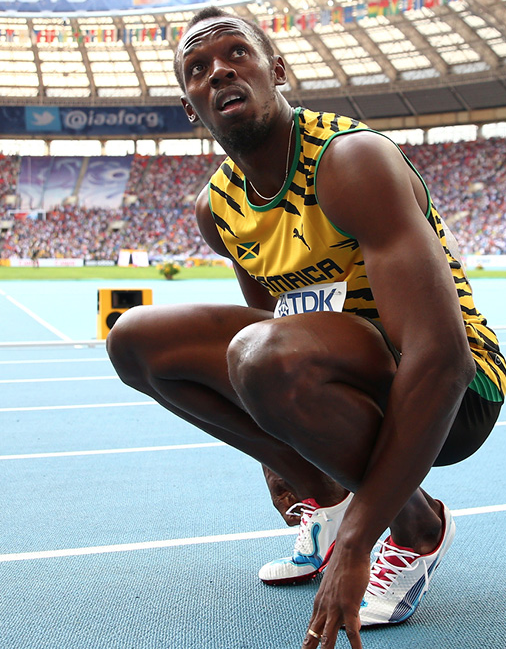
I know there are plenty of scientists who would love to look at him, but I’m not sure Bolt will be too keen just yet. Hopefully he won’t wait too long though, because your fast-twitch muscle fibres shrink preferentially as you get older – the cross-sectional areas start to shrink and then gradually disappear, while the slow-twitch ones hang around. In the same way that people think of Einstein as the embodiment of intellect, Bolt has become this embodiment of athleticism.
I would love to see him deconstructed. Also, NBA player LeBron James – he’s huge. His hands are the size of dinner plates, he’s 6ft 8ins and weighs 250 pounds, yet he has a vertical leap of about 41 inches. He never did the NBA Combine – a series of tests that take place before the Draft, testing players on speed and jumping ability – so I’d love to see what else he’s capable of.”
JARGON BUSTER
EPO receptor mutation
The hormone EPO tells the body to produce red blood cells – endurance athletes have been known to inject a synthetic version to boost their ability to carry oxygen round the body. But for Finnish cross-country skier Eero Mäntyranta, there was no need (though he did admit to using synthetic hormones, which at the time were not illegal in his sport). He inherited a rare version of the EPO receptor gene that meant his bone marrow cells – which create red blood cells – were particularly sensitive to EPO. So his EPO levels were always low, but his red blood cell count was extraordinarily high.
Myostatin mutation
The myostatin gene (myo meaning ‘muscle’, and statin meaning ‘to halt’) sends a signal to muscles to stop growing – without it, muscle growth explodes. The ‘superbaby’ born in Berlin around the turn of the millennium had no detectable myostatin in his blood, meaning he emerged into the world as if he’d been “hitting the womb weight room”, says Epstein.
Fast and slow-twitch muscle fibre
Muscle fibres can be broken down into these two main types: fast-twitch and slow-twitch. Slow-twitch fibres are better at using oxygen to generate more fuel for prolonged periods, and can work for a long time before they fatigue. Fast-twitch fibres are better at producing short bursts of strength and speed, but they fatigue more quickly.
Kalenjin tribe
A tribe numbering just under five million people who inhabit Kenya’s Rift Valley Province and traditionally practise livestock herding. They represent about 12 per cent of Kenya’s population, but more than three-quarters of the country’s top runners.


